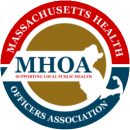
ES 10. Build and maintain a strong organizational infrastructure for public health
Core Function: Assurance
Why This Is Important
Effective public health practices don’t establish—or sustain—themselves. Internal capacity, supported by a strong organizational infrastructure, is the fuel needed to drive effective practice. A strong infrastructure contributes to sustainability in two important ways. First, it takes people—and the assorted resources they bring to the table—to move public health efforts forward. Second, as substance use-related priorities shift and evolve, a strong infrastructure is key to responding nimbly and effectively over time. Finally, funders and other community stakeholders are more likely to support an initiative that is supported by a strong infrastructure.
What’s Involved
- Convene a diverse team dedicated to infrastructure development and sustainability planning.
- Maintain data sources to ensure ongoing access to timely and relevant information.
- Develop effective planning processes that are flexible enough to respond to changing needs, but structured enough to be productive and sustainable.
- Routinely examine existing programs and processes to ensure that they remain relevant and continue to meet the needs of those populations most at risk for substance use and other behavioral health problems.
- Routinely examine existing partnerships to ensure that they include the voices of those community groups that have historically been silenced, including people with lived experience.
- Secure revenue and resources for prevention, but think critically about what will happen when current funding goes away.
Key Considerations
- When it comes to infrastructure, a transparent planning process is as important as staffing and technology. Here are some reasons why:
- First, collaboration is key to prevention success, and a well-established planning process supports collaboration. It helps practitioners establish a shared language across health issues and build the interdisciplinary partnerships needed to make a real difference at the local level.
- Second, communities with a well-established strategic planning process are better prepared to recognize—and respond to—a continually changing substance use landscape.
- Third, substance misuse prevention efforts are most effective when they are part of a comprehensive approach. Designing, implementing, and tracking such an approach takes planning.
- Infrastructure is just one piece of the sustainability puzzle. Sustainability also depends on the effectiveness of the interventions being implemented, and the degree to which these interventions are supported by the wider community. Municipalities should only strive to sustain prevention practices that produce positive outcomes. And it takes everyone—the public, key stakeholders, and prevention champions—rowing in the same direction to create a strong enough current to establish effective prevention practices and sustain them over time.
Get Started!
- Think critically about how you are defining “effectiveness” and whether these practices are improving the health of those populations in greatest need. Are past assumptions about effectiveness still valid in the current climate?
- Examine your current partnerships and develop a plan for filling gaps. Have you built and sustained relationships with a diverse group of stakeholders? Do your missions and priorities align? Do partners have the collective capacities (e.g., substance use expertise, research skills, lived experience) and connections (e.g., access to data, access to focus populations, relationships with local decision makers) needed to establish and sustain successful opioid prevention efforts? What steps are you taking to connect with these partners? Are you attending their meetings, or expecting them to come to yours?
- Cultivate champions. These community members will be vital to the success—and sustainability—of your opioid prevention efforts, helping you to raise awareness and get buy-in for new initiatives.
- Track everything you do. Capture and file away critical information and insights about your journey, including meeting attendance lists, meeting minutes, partnership agreements (e.g., memos of understanding), and community outreach and awareness-raising materials (e.g., newspaper articles, fliers). Lessons learned from these materials and records can help you determine where you may need to build infrastructure and/or refine your current systems and approaches.
Infrastructure in Action: Organizing to Address Substances in Stoughton (OASIS)
The Town of Stoughton has a unique and diverse public health structure comprising a volunteer-appointed Board of Health with two Board of Health agents (municipal staff) and a public health/visiting nurses department with multiple public health nurses. With a broad range of health issues to address, including emergency planning and pandemic-related issues, the town relies heavily on its long-term involvement in Organizing to Address Substances in Stoughton (OASIS), Stoughton’s community-wide prevention coalition, to identify and advance priority substance use prevention initiatives.
OASIS represents an alliance of more than 50 community members and local organizations dedicated to reducing underage misuse of alcohol, marijuana, nicotine, and prescription drugs in the Stoughton area. The coalition is coordinated by the town’s prevention coordinator—a position paid for through a line item in the town budget.
“Stoughton has a broad definition of prevention,” says prevention coordinator Stephanie Patton. “It recognizes that having a fully-funded coordinator position, dedicated solely to prevention, helps everyone.”
Through its participation in OASIS, Stoughton’s public health staff have contributed to a number of opioid prevention projects. For example, the public health nurses help to staff the annual prescription drug take-back events that are held during municipal Hazardous Waste Days, an event co-sponsored by the Board of Health. In addition, Stoughton was the first community in Massachusetts to independently equip the police department with the life-saving, opioid overdose-reversal medication Narcan. Championed by Stoughton’s chief of police, the project relied heavily on broad community support to plan and implement the program—including but not limited to the district attorney’s office, fire/EMS department, Brockton Area Multi-Service Center, and Board of Health.
“The coalition already had all of these folks at the table,” says Patton. “We used coalition meetings to strategize. To make sure people had the training they needed. We had the infrastructure in place.”
The Board also relies on the prevention coordinator and its coalition involvement to stay abreast of emerging substance use trends and inform policy decisions. For example, when Massachusetts was first considering legalizing recreational marijuana use for adults, the prevention coordinator provided vital information to the Board on the implications of having a marijuana dispensary in Stoughton. The Board also worked with the coordinator to create numerous policies to restrict smoking and vaping in workplaces and public spaces, and to restrict sales of smoking products and accessories. Many of these policies were adopted ahead of state changes, which made Stoughton one of the communities involved in pushing Massachusetts policy to shift based on what was happening in individual communities.
“The Board has so much on their plates already; substance use prevention is just one of many priorities,” says Patton. “But their active participation in OASIS keeps prevention on their radar. They learn about best practices, what other towns are doing, and what it takes to move the work forward—as part of a community-wide effort.”
